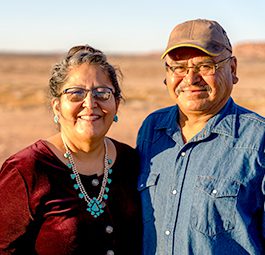News
AAFA’s 2022 Asthma Capitals™ Report Lists Most Challenging Cities to Live in the U.S. With Asthma
Washington D.C., September 14, 2022 — Today, the Asthma and Allergy Foundation of America (AAFA) rolled out its 2022 Asthma CapitalsTM report. The publication coincides with “Asthma Peak Week”, a time of year when asthma attacks and emergency department visits spike. AAFA’s Asthma Capitals™ report analyzes data from the 100 largest cities in the continental United States to determine its ranking. Detroit, Michigan takes the top spot as the most challenging place to live for asthma in the 2022 report.
The weighted ranking is based on three criteria: asthma prevalence, emergency department visits for asthma, and deaths due to asthma. The report also highlights risk factors including poverty, air pollution, lack of access to specialists, pollen counts, medicine use, smoking, and the rate of uninsured residents in an area. The burden of asthma falls heavily on people who have low income and wealth, as well as on Black, Hispanic, and Indigenous communities.
The top 20 Asthma Capitals™ for 2022 are:
- Detroit, MI
- Cleveland, OH
- Allentown, PA
- Lakeland, FL
- Fresno, CA
- Charleston, SC
- Harrisburg, PA
- Poughkeepsie, NY
- Philadelphia, PA
- Baltimore, MD
- Columbus, OH
- Richmond, VA
- Cape Coral, FL
- St. Louis, MO
- Orlando, FL
- Albany, NY
- Louisville, KY
- Greenville, SC
- Toledo, OH
- Rochester, NY
The poverty rate and very poor air quality in Detroit contribute to its high asthma prevalence and asthma mortality rates. To see the complete, 100-city list ranking visit asthmacapitals.com.
“AAFA’s Asthma Capitals report is a national call-to-action to help the estimated 25 million Americans living with asthma. There are stark disparities in asthma based on race, gender, income and where people live,” said Kenneth Mendez, president and CEO of AAFA. “To address these disparities, AAFA’s Health Equity Advancement and Leadership program aims to develop and support community programs that improve asthma outcomes and promote equity. We are funding and resourcing critical programs in Detroit, St. Louis, and several other Asthma Capitals to save and improve lives.”
The 2022 Asthma Capitals™ report calls attention to a disturbing update in asthma mortality data. For the first time in two decades, deaths from asthma are on the rise. St. Louis, Missouri, which ranked as the #14 Asthma Capital, experienced the highest asthma-related crude death rate per 100,000 people over the timeframe analyzed for this year’s report.
September is a difficult time for people with asthma. This month sees more asthma exacerbations and emergency department visits than any other month. In fact, the third week of September is considered Asthma Peak Week. Many more people stay in the hospital for asthma shortly after school starts than at any other time of the year. Around 25% of asthma-related hospital stays in children happen in September. The number of asthma hospital stays peak for school-age children first. Then preschool children, and then adults.
Some of the causes that trigger this annual epidemic of asthma attacks include:
- When children return to school, respiratory illnesses spread.
- Many school buildings do not have healthy air.
- Ragweed pollen season is at its peak.
- Mold counts may be on the rise.
- Wildfire season on the west coast pollutes the air for hundreds or thousands of miles.
“Respiratory illnesses, air pollution, and allergens such as pollen and mold are all common triggers of asthma,” said Melanie Carver, chief mission officer at AAFA. “Without access to healthy environments, quality health care and affordable medicines, it can be difficult to manage asthma. Your asthma health is greatly determined by the community you live in. People who have affordable and accessible health care, clean air, and economic stability have a greater shot at managing and controlling their asthma.”
For the latest AAFA news and resources go to aafa.org.
Press Contact:
Melanie Carver
Chief Mission Officer
Asthma and Allergy Foundation of America (AAFA)
gro.afaa@aidem
About the Research
AAFA publishes the Asthma CapitalsTM report to raise awareness about the nationwide impacts of asthma. The report analyzes data from across the continental United States and ranks the 100 largest cities where it is challenging to live with asthma. The report ranks cities by the most critical of health outcomes – asthma prevalence, emergency department visits due to asthma attacks, and asthma mortality. The outcomes are not weighted equally. The report also examines asthma risk factors that influence the outcomes. Visit AsthmaCapitals.com to see the full list of 100 cities, methodology and to learn more about asthma management.
About AAFA
Founded in 1953, AAFA is the oldest and largest non-profit patient organization dedicated to saving lives and reducing the burden of disease for people with asthma, allergies and related conditions through research, education, advocacy and support. AAFA offers extensive support for individuals and families affected by asthma and allergic diseases, such as food allergies and atopic dermatitis (eczema). Through its online patient support communities, network of local chapters and affiliated support groups, AAFA empowers patients and their families by providing practical, evidence-based information and community programs and services. AAFA is the only asthma and allergy patient advocacy group that is certified to meet the standards of excellence set by the National Health Council. For more information, visit: www.aafa.org








